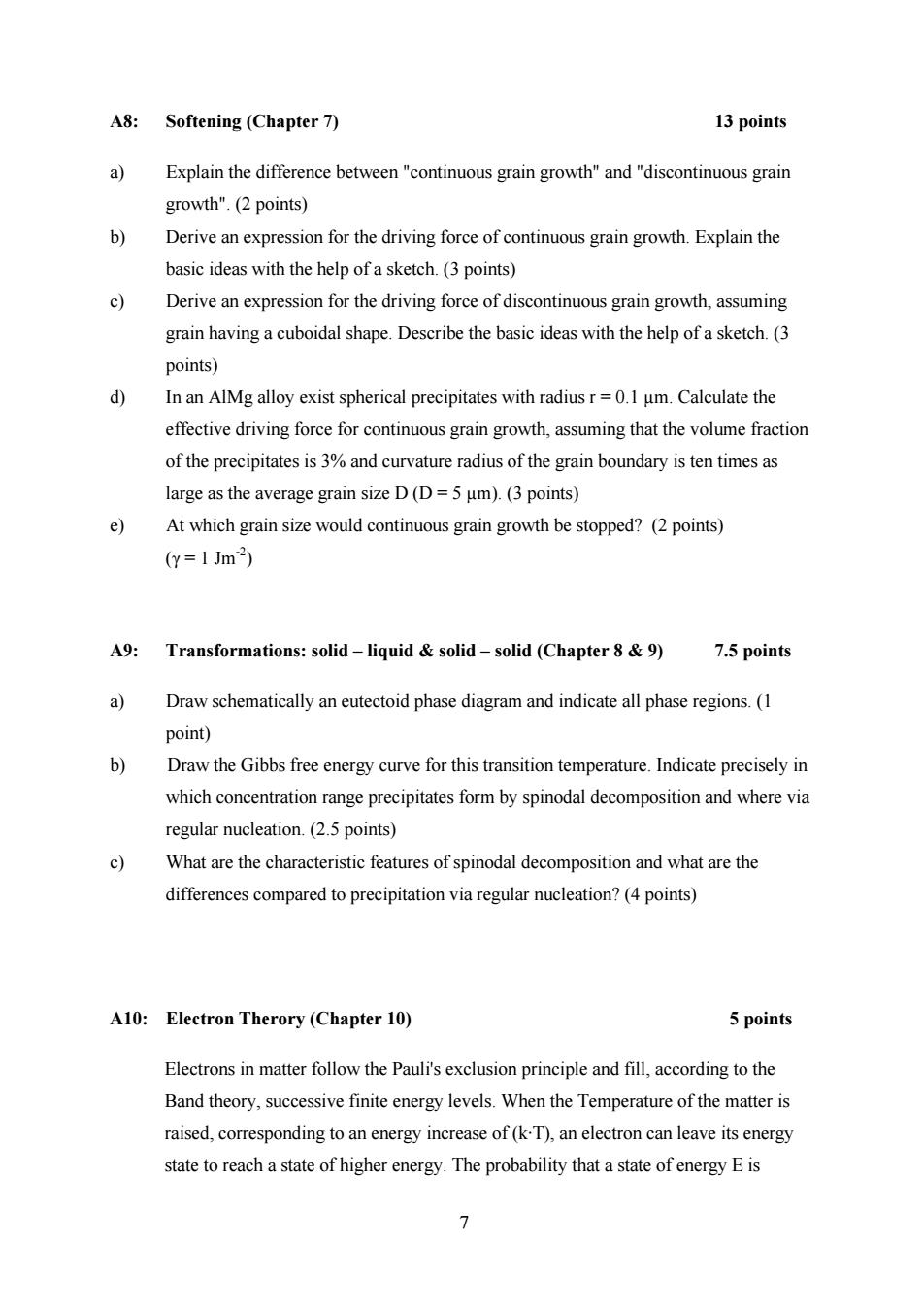正在加载图片...

A8:Softening(Chapter 7) 13 points a Explain the difference between "continuous grain growth"and "discontinuous grain growth".(2 points) b) Derive an expression for the driving force of continuous grain growth.Explain the basic ideas with the help of a sketch.(3 points) c) Derive an expression for the driving force of discontinuous grain growth,assuming grain having a cuboidal shape.Describe the basic ideas with the help of a sketch.(3 points) d In an AlMg alloy exist spherical precipitates with radius r=0.1 um.Calculate the effective driving force for continuous grain growth,assuming that the volume fraction of the precipitates is 3%and curvature radius of the grain boundary is ten times as large as the average grain size D(D=5 um).(3 points) e) At which grain size would continuous grain growth be stopped?(2 points) (y=1 Jm2) A9: Transformations:solid-liquid solid-solid (Chapter 8&9) 7.5 points a) Draw schematically an eutectoid phase diagram and indicate all phase regions.(1 point) b) Draw the Gibbs free energy curve for this transition temperature.Indicate precisely in which concentration range precipitates form by spinodal decomposition and where via regular nucleation.(2.5 points) What are the characteristic features of spinodal decomposition and what are the differences compared to precipitation via regular nucleation?(4 points) A10:Electron Therory (Chapter 10) 5 points Electrons in matter follow the Pauli's exclusion principle and fill,according to the Band theory,successive finite energy levels.When the Temperature of the matter is raised,corresponding to an energy increase of(k.T),an electron can leave its energy state to reach a state of higher energy.The probability that a state of energy E is >7 A8: Softening (Chapter 7) 13 points a) Explain the difference between "continuous grain growth" and "discontinuous grain growth". (2 points) b) Derive an expression for the driving force of continuous grain growth. Explain the basic ideas with the help of a sketch. (3 points) c) Derive an expression for the driving force of discontinuous grain growth, assuming grain having a cuboidal shape. Describe the basic ideas with the help of a sketch. (3 points) d) In an AlMg alloy exist spherical precipitates with radius r = 0.1 µm. Calculate the effective driving force for continuous grain growth, assuming that the volume fraction of the precipitates is 3% and curvature radius of the grain boundary is ten times as large as the average grain size D (D = 5 µm). (3 points) e) At which grain size would continuous grain growth be stopped? (2 points) (γ = 1 Jm-2) A9: Transformations: solid – liquid & solid – solid (Chapter 8 & 9) 7.5 points a) Draw schematically an eutectoid phase diagram and indicate all phase regions. (1 point) b) Draw the Gibbs free energy curve for this transition temperature. Indicate precisely in which concentration range precipitates form by spinodal decomposition and where via regular nucleation. (2.5 points) c) What are the characteristic features of spinodal decomposition and what are the differences compared to precipitation via regular nucleation? (4 points) A10: Electron Therory (Chapter 10) 5 points Electrons in matter follow the Pauli's exclusion principle and fill, according to the Band theory, successive finite energy levels. When the Temperature of the matter is raised, corresponding to an energy increase of (k·T), an electron can leave its energy state to reach a state of higher energy. The probability that a state of energy E is